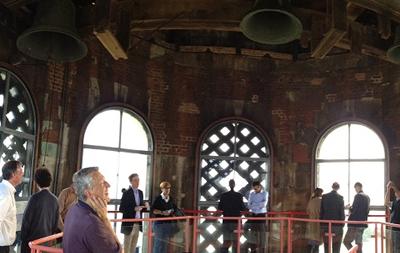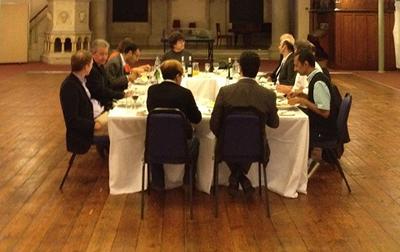Southampton hosts first meeting of UK AMR 'Bridging the Gap' Networks

The University held a mini-symposium with representatives from the UK Networks that EPSRC funded on its 'Bridging the Gaps between the Engineering and Physical Sciences (EPS) and Antimicrobial Resistance (AMR)' call.

Of the 10 other networks funded from EPSRC (EP/M027260/1), eight sent senior representatives, in many cases the Principal Investigator, as shown in the list of attendees below.
After an opening address by Tim Leighton, which outlined the aims of the day and issues in developing such networks, each network gave a presentation of its design and plans, and what measures they found to be effective. Best practice was shared and plans for joint activities were drawn up, including exchanges, shared facilities and joint meetings. The day's presentations laid particular emphasis on producing impact from interdisciplinary research that makes a difference to combatting AMR in healthcare, the food industry and the wider world. There is need for a critical mass of resources to make sure that innovations do not remain in the lab or clinical trial, but instead have sufficient backing to be rolled out to benefit thousands of people. This is particularly challenging for the groundbreaking research needed to produce step changes in performance, as opposed to incremental changes, which are more usually associated with incremental research. Note was also taken of the need for researchers to ensure that their language is suitable for the typical audience of potential collaborators, who may be erudite but not versed in the jargon the presenter is tempted to use.

After the meeting, the delegates went to the nearby remains of Netley Military Hospital, which was built to cope with the wounded from the Crimean war. It was, for a time, the largest hospital in the world. Its design was in some ways a battle between established architects and the realizations of the need for change, to combat infection; led by Florence Nightingale. Dinner was held in the Chapel downstairs where discussions continued - primarily on future activities for the new consortium.
Attendees
Roberto La Ragione and Richard Curry, University of Surrey
Steven Bell, Queen’s University Belfast
John King, University of Nottingham
Adrian Mulholland and Claire Spreadbury, University of Bristol
Jamie Hobbs, University of Sheffield
Danish Malik, University of Loughborough
Maggie Smith, University of York
Pantelis Georgiou, Imperial College
Southampton delegates
Tim Leighton (Chair), Engineering
Syma Khalid, Chemistry
Frances Clarke, RIS
Bill Keevil, Biological Sciences
Rob Eason, Optoelectronics
John Holloway, Medicine
David Voegeli, Health Science
Colin Sones, Optoelectronics
Apologies: Chris Dowson (University of Warwick), Andrew Pitt, Aston University
Notes for editors
NAMRIP is funded by the University of Southampton and benefits hugely from £868,704.00 of funding from EPSRC's Network for Antimicrobial Action 'Bridging the Gap' call [EP/MO27260/1].
The MRC has also invested in NAMRIP, with Syma Khalid’s and Paul Elkington’s projects.